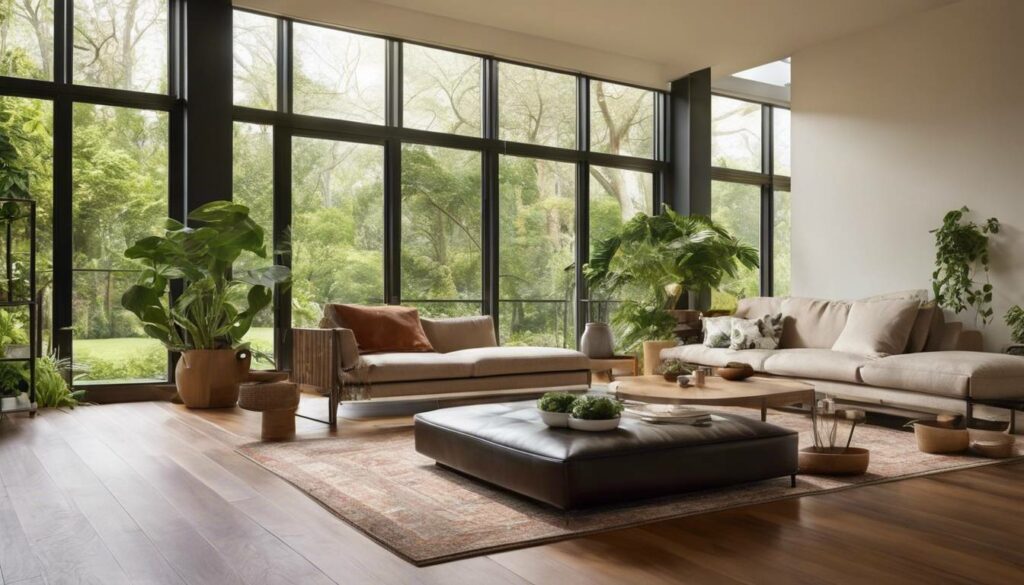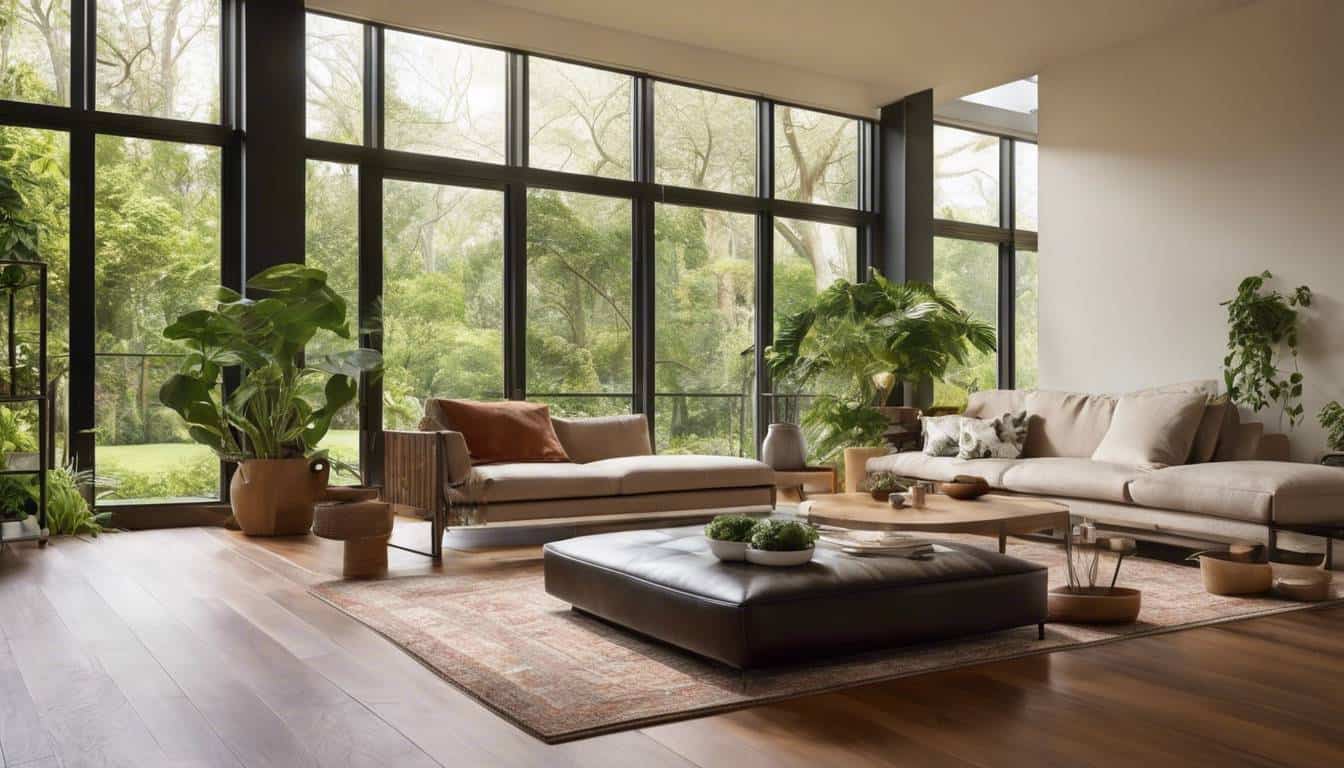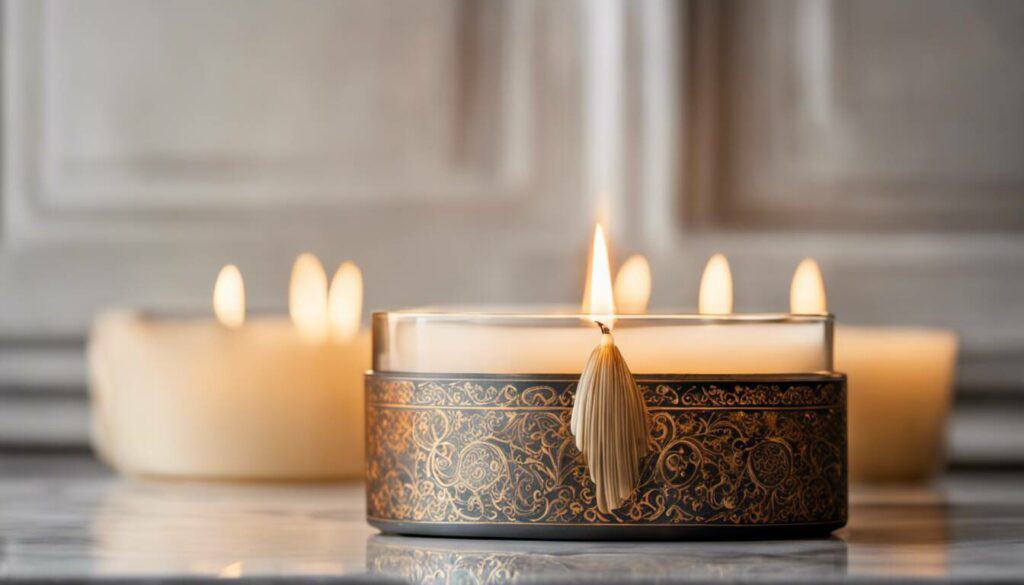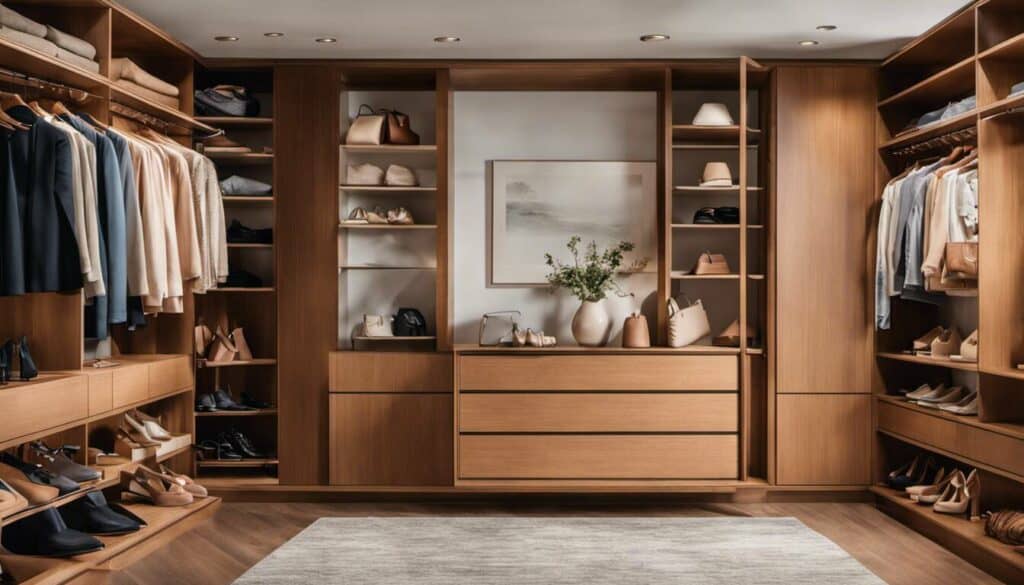If you feel like you’ve spent half your yearly salary on floors… and you want to keep them intact, you’re at the right place (coming from a guy that’s been there). First off, the ideal humidity for your hardwood floor rests between 35% and 55%. This sweet spot keeps the wood healthy, averting unwelcome changes like warping or shrinking. However, remember that this range can shift depending on your geographical location, as different climates can impact these numbers. So having a good understanding of your local environment plays a key part too. With these points in mind, let’s now explore how your location could affect these ideal humidity levels.
To maintain the ideal humidity levels for hardwood floors, consider using a humidifier to add moisture during dry periods, and a dehumidifier during humid conditions. Additionally, keep a stable temperature range between 60-75 degrees Fahrenheit to prevent damage to the wood.
What is the Ideal Humidity Level for Hardwood?
The optimal humidity level for hardwood floors is crucial to maintaining their structural integrity and overall health. Picture a tree in a lush forest, thriving in its natural environment – it needs just the right balance of sunlight, water, and air to stay strong and healthy. Similarly, like a living organism, hardwood flooring requires a controlled environment to prevent issues such as shrinking, expanding, and warping. So what is that ideal humidity range?
Ideal Humidity Range
The recommended range for ideal humidity levels is between 35% and 55%. This range has been carefully determined to ensure that your hardwood floors remain stable and durable. It offers the perfect balance – not too dry and not too damp. When the humidity falls below this range, the wood can shrink and develop gaps, affecting both the appearance and structural soundness of the floor. On the other hand, when the humidity exceeds 55%, it can cause the wood to expand and potentially warp.
This optimal humidity range acts as a protective barrier against these damaging effects, helping to maintain the beauty and longevity of your hardwood floors. It’s akin to finding the sweet spot that promotes healthy growth without allowing adverse conditions to take hold.
Think of maintaining the ideal humidity levels as similar to caring for an indoor plant. Just as plants thrive within specific temperature ranges and moisture levels, so do your hardwood floors. You wouldn’t want to expose your plant to long periods of drought or flood it with excessive water; similarly, you must provide your hardwood floors with a controlled environment to ensure their well-being.
In essence, maintaining proper humidity levels ensures that your investment in beautiful hardwood flooring remains protected while enhancing its longevity.
Having understood the significance of maintaining an ideal humidity level for hardwood floors, let’s delve into practical tips and techniques for achieving this balance effectively.
How Your Location Affects Ideal Humidity Levels
The climate in your area significantly impacts the maintenance of your hardwood floors. Just as some people thrive in warm weather while others prefer cooler temperatures, hardwood also reacts to its surroundings and requires different care based on location. For instance, hardwood floors may buckle in summer due to high humidity. Let’s dissect this further.
Cold, Dry Winters:
In regions with cold, dry winters, the air inside homes tends to have lower humidity levels. This low humidity isn’t favorable for wood floors as it can cause them to shrink and develop gaps due to the lack of moisture. To counter this, humidifiers are essential for adding moisture to the air inside your home.
Hot and Humid Climates:
Conversely, areas with hot and humid climates experience higher humidity levels. In these locations, the increased moisture in the air can make wood floors expand and even warp. Dehumidifiers play a crucial role in maintaining optimal humidity levels for your hardwood floors in these regions. Additionally, reliable air conditioning also assists in regulating indoor humidity in hot climates.
For example, if you’re residing in a place like Miami, Florida, which is renowned for its hot and humid weather, having dehumidifiers and a dependable air conditioning system will help maintain the correct humidity levels for your wood floors. Conversely, if you’re situated in a colder area like Denver, Colorado, using a humidifier alongside heating systems will help counteract the low moisture levels.
Understanding your specific climate conditions and responding accordingly will ensure that your hardwood floors remain healthy and beautiful over time.
Recognizing how your location affects the ideal humidity levels for your hardwood floors empowers you to take proactive measures such as using humidifiers or dehumidifiers to maintain the appropriate climate for your wood flooring regardless of where you live.
Effects of Low Humidity on Hardwood
Low humidity poses a serious threat to the health of your hardwood floors. When the air is dry, it starts to impact the moisture content within the wood. Consequently, the wood loses moisture, leading to shrinkage, gaps between floorboards, and even permanent damage such as splitting or cracking. This can also cause hardwood floors to fade, affecting their appearance.
You might wonder why a lack of moisture would cause such issues. Think of a drying sponge—it contracts and becomes smaller. Similarly, in low humidity conditions, hardwood boards shrink and develop gaps between them, impacting both their visual appeal and structural integrity.
For instance, picture moving into a new home with stunning oak flooring throughout. After a few weeks of running your heating system in the winter, unsightly gaps start appearing between the planks due to low humidity levels that cause the wood to lose moisture, leading to contraction and gap formation.
It’s not just about appearance though; these gaps can lead to bigger issues over time if left unaddressed. Dust and debris can accumulate within these gaps, making regular cleaning more challenging and potentially affecting the air quality in your home. Additionally, if low humidity conditions persist, there’s a risk of hardwood floors splintering or splitting, which can be costly to repair. These issues can impact not just the aesthetic appeal but also the durability and functionality of your flooring.
When humidity levels drop below 30%, hardwood floors can shrink and develop gaps.
In essence, maintaining optimal humidity levels is crucial for preserving the beauty and structural integrity of your hardwood floors. The potential risks associated with low humidity highlight the importance of implementing measures to ensure that your wood flooring remains healthy and free from damaging contraction.
Understanding how low humidity can affect your hardwood floors is crucial for effective maintenance. Next, let’s explore the impact of high humidity on your precious hardwood flooring.
Effects of High Humidity on Hardwood
Imagine a long, hot summer arrives, accompanied by a surge in humidity. You’ve probably noticed how everything feels a bit more damp, even indoors. Amidst this change in climate, your hardwood floors can also undergo a dramatic transformation. As the humidity rises, so too does the level of moisture absorbed by your wooden floors.
It’s crucial to note that excessive moisture from high humidity can lead to detrimental consequences for your hardwood floors. When wood absorbs moisture, it swells, causing floorboards to expand and bend, resulting in various issues such as cupping, crowning, or buckling.
Wood Expansion:
- The expanded floorboards start pressing against each other due to the lack of space caused by swelling.
- This pressure results in a concave curvature known as “cupping,” where the edges of the boards are higher than their centers.
Warping:
- Excessive moisture absorption causes bending, leading to what is termed as “crowning” or “buckling.”
- Crowned floorboards have a convex curvature, with their centers being higher than their edges.
All these issues not only detract from the visual appeal of your hardwood floors but also pose structural concerns that cannot be overlooked.
One precaution you can take is to invest in a reliable dehumidifier to monitor and maintain optimal indoor humidity levels. By doing so, you actively reduce the risk of overexposure to moisture—a proactive approach that helps protect hardwood floors against expansion and warping.
In essence, high humidity isn’t just about feeling uncomfortable—it’s also about ensuring the long-term health and sustainability of your hardwood floors. By managing and regulating indoor humidity levels, you are actively preserving not just its aesthetic charm but also its structural integrity.
Now that we understand the adverse effects of high humidity on hardwood floors, let’s explore effective techniques to control and maintain ideal humidity levels for hardwood flooring.
Techniques to Control Humidity for Hardwood
Controlling humidity levels is crucial in preserving the quality and appearance of your hardwood floors. Let’s delve into two key methods for managing humidity: the use of humidifiers and dehumidifiers.
Use of Humidifiers
In areas with low humidity, particularly during the winter months, it’s essential to introduce moisture into the air. Employing a humidifier helps prevent the hardwood floors from drying out, shrinking, or developing gaps between the floorboards. The ideal humidity range for hardwood floors is between 35% and 55%, but it’s recommended to keep it between 35% and 50%.
To choose a suitable humidifier, you may want to consider factors such as the size of the room where you’ll be using it, energy consumption, and ease of maintenance. Ultrasonic humidifiers are known for their quiet operations, making them suitable for bedrooms and offices. On the other hand, evaporative humidifiers are often recommended for larger areas due to their ability to add moisture over a wide space. The cost of a humidifier can vary widely, ranging anywhere from $50 to $200.
Use of Dehumidifiers
Conversely, in areas with high humidity levels, particularly during warmer seasons or in regions with naturally high humidity, employing a dehumidifier is crucial. By extracting excess moisture from the air, dehumidifiers help prevent hardwood floors from absorbing excessive moisture and subsequently expanding or warping.
When selecting a dehumidifier, opt for models equipped with a hygrometer to monitor and display current humidity levels. Consider the energy consumption of the unit—dehumidifiers typically consume anywhere between 300 to 700 watts. Prices for dehumidifiers can range from $150 to $300 depending on the capacity and additional features like auto-defrost or quiet operation modes.
By leveraging these tools appropriately based on your specific climate conditions, you can effectively maintain consistent climate levels within your home or office environment—a key factor in promoting the longevity and beauty of your hardwood floors. This is particularly important for certain types of wood, such as when refinishing Brazilian cherry floors, which can be sensitive to humidity changes.
Now that we’ve explored techniques for controlling humidity within indoor spaces, let’s turn our attention to understanding how seasonal changes impact humidity levels for hardwood floors.
How Seasonal Changes Impact Humidity for Hardwood
Have you ever considered that the changing seasons profoundly affect the wooden surfaces in our homes? Just as the coming and going of seasons impacts our moods, it also significantly influences the air and humidity within our homes.
During the drier, colder months of winter, indoor humidity can plummet as the heating is switched on. Low humidity can spell trouble for your hardwood floors, causing them to shrink or develop gaps. When floorboards lose moisture due to low humidity, they tend to contract, creating unsightly gaps. Using a humidifier is essential during these months as it helps introduce moisture back into the air, preventing the floors from drying out and suffering damage.
Conversely, during the warmer and more humid summer months, excessive moisture can be equally problematic for wood floors. High humidity can cause wood boards to expand and possibly warp if left unchecked over extended periods. The solution here lies in using dehumidifiers and air conditioning to maintain ideal indoor humidity levels. Dehumidifiers work by removing excess moisture from the air, while air conditioning not only cools your home but also helps to control humidity levels.
As we adjust to these seasonal changes throughout the year, it’s crucial to be proactive in managing humidity levels within our homes to ensure that our hardwood floors remain healthy and beautiful for years to come.
Taking these practical steps ensures that your hardwood floors remain in good condition regardless of the season. By being proactive about managing humidity levels, you’re making a long-term investment in preserving the beauty and integrity of your wooden floors. Additionally, it’s important to sanitize hardwood floors regularly to maintain their cleanliness and overall health remain in good condition regardless of the season. By being proactive about managing humidity levels, you’re making a long-term investment in preserving the beauty and integrity of your wooden floors.






